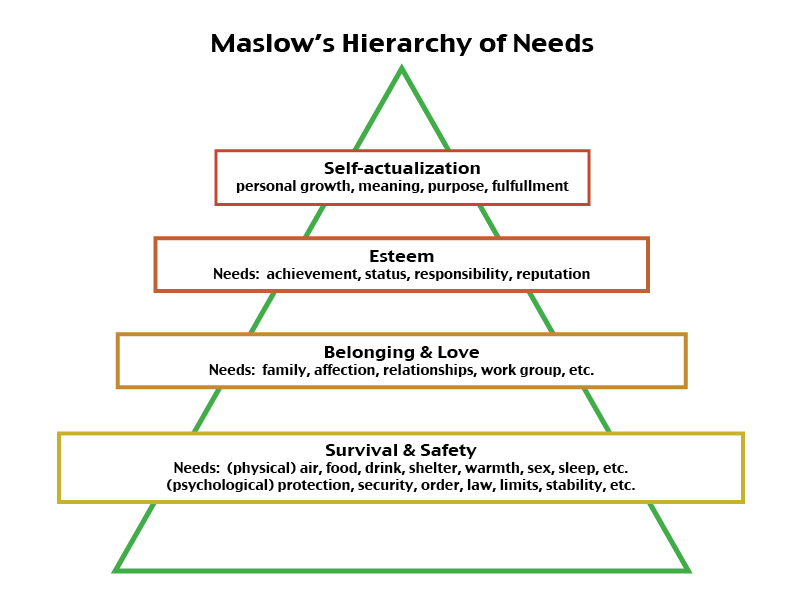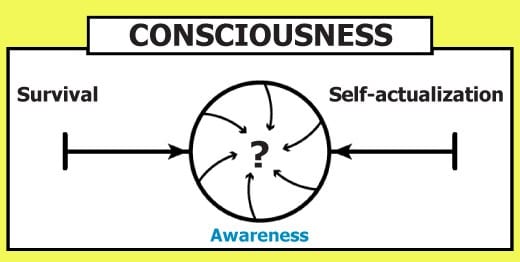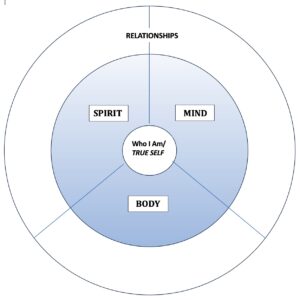So much of our human experience in the new millennium is attributed to the rapid pace of change brought about by both the industrial and technological revolutions of the past century. There is no doubt of their significant impact on our growth and development, however the “evolution of human consciousness drives technological, organizational and social progress” (Dent 1999) not the other way around. Because human consciousness is not easily defined or located, I offer the definition below as a starting point for the purposes of discussion.
Consciousness is a quality of the mind generally regarded to comprise qualities such as subjectivity, self-awareness, sentience, sapience and the ability to perceive the relationship between oneself and one’s environment. In common parlance, consciousness denotes being awake and responsive to one’s environment; this contrasts with being asleep or being in a coma.
Many cultures and religious traditions place the seat of consciousness in a soul separate from the body. Conversely, many scientists and philosophers consider consciousness to be intimately linked to the neural functioning of the brain.
As you can see, the verdict is still out whether a spiritual or a scientific viewpoint is correct. In time, we may find some combination of both views to be accurate. For the time being, one depiction of our human evolutionary development is Abraham Maslow’s hierarchy of human needs as illustrated below.
Maslow’s theory stipulates that until the needs at each lower step on the evolutionary ladder (physical and emotional) are met, humans are unable to consider their higher order needs of influence and personal development. In other words, if we are starving or our survival is threatened, we cannot focus on socializing, relating to others, learning how to belong in a group or influence others. Maslow further contended that very few people could be found in the highest stage of self-actualization – i.e., Albert Einstein, Eleanor Roosevelt.
In the last century, new technologies, improved educational levels and a drastically heightened standard of living in developed nations moved massive numbers of people out of survival into Maslow’s belonging stage. Although to a lesser degree, this same phenomenon was experienced in the esteem and self-actualization stages, and by all appearances another leap in our standard of living is likely to grow these numbers in the next century. Why? Because more and more workplaces require their workforce to operate in self-managing teams responsible for planning, designing and decision-making rather than waiting to be told what to do or asking for permission.
This knowledge work necessitates the development of self-esteem in place of belonging and conforming. As companies move toward becoming more entrepreneurial, their workforces must self-actualize in order to envision and create new approaches in our rapidly changing world where few or no fixed rules apply. An additional incentive occurs as technologies increasingly perform our routine tasks thereby pushing us into using higher levels of consciousness.
Cliff Anderson (1995) emphasizes that those in Maslow’s self-actualization stage utilize intuitive, non-linear thinking (right brain) whereas those in the self-esteem stage require linear, abstract/conceptual skills (left brain). In the world of business, left-brain logic has been the governing tradition. Logical decision-making is based on observable data gathered overtime across multiple experiences. However, when you are faced with new experiences with little or no data, logic alone will not solve these problems or dissolve the uncertainties.
During times of uncertainty and complexity, different skills, processes and tools are required, hence, why most organizations today recruit for intuitive, self-aware decision-makers or right-brain thinkers. This non-linear, complex consciousness is viewed as vision-logic by Ken Wilbur (1996) and does not develop in healthy, mature individuals until their late twenties or early thirties. In the business world, we refer to this level of consciousness as critical thinking – the ability to analyze thinking – and it traditionally has been the purview of the leadership class. Given that individual creativity and accountability are required to optimize and innovate in business, entrepreneurs instead of bureaucrats would fill the bill; more “leaders in one’s own life” and fewer followers.
So, if we were to speculate that the paradigms of the past for human consciousness are survival and self-actualization, both of which we see in operation today, what would be their convergence? I must admit this was a tough one for me. Most spiritual literature speaks of “unity” consciousness (oneness with all things, cooperation, universal love) as our evolutionary next step. If our present belief is “separateness or duality” where we cannot see the connectedness of everything, yet we also see the experience of self-actualization (purpose and meaningfulness), I am inclined to offer another step before we arrive at unity. I might suggest that step to be “awareness.”
I am interested to know what emerged from your intuition. Please send me your comments.
References:
Anderson, Cliff. (1995). The Stages of Life, Altantic Monthly Press.
Dent, Harry S., Jr. (1999). The Roaring 2000s: Building the Wealth and Lifestyle You Desire in the Greatest Boom in History, Touchstone.
Maslow, Abraham. (1954). Motivation and Personality, New York: Harper.
Wilbur, Ken. (1996). A Brief History of Everything, Shambhala.






